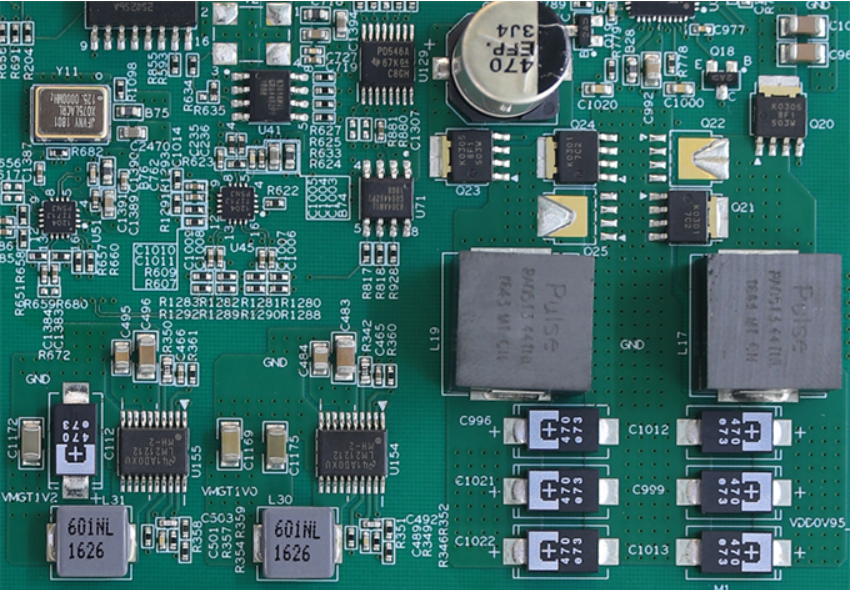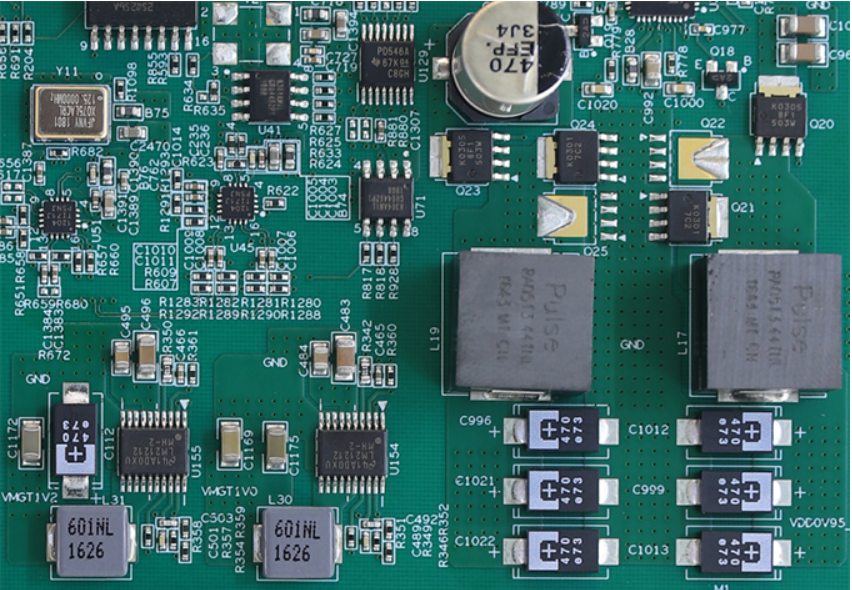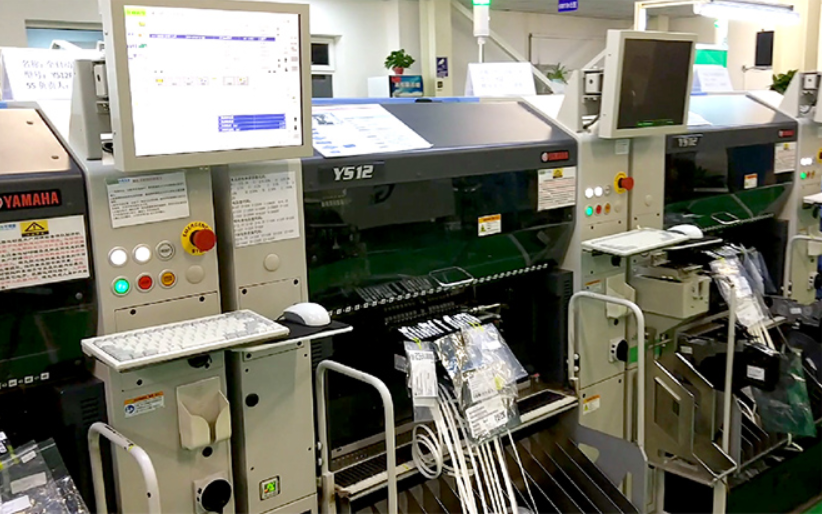
The causes and control methods of tin beads in SMT chipprocessing and production: With the continuous development of light, thin, power saving, miniaturization and planarization of electronIC information products, the electronic products with different uses must adopt surface mounting (SMT) technology. However, tin beads are very harmful to PCBA electronic products, so how to reduce tin beads is one of the key control contents of SMT manufacturers.

According to relevant cases, during reflow soldering in SMT production, due to the splashing of solder paste metal particles, it is easy to form SMAll spherical solder beads or irregular solder particles, which are calLED solder beads. Tin bead is one of the main defects in SMT chip processing and production, with a diameter of about 0.2~0.4 mm. It mainly appears on the side of the chip components or between IC pins. It not only affects the appearance of PCBA products, but also may cause short circuit in use, seriously affect the quality and life of electronic products, and even cause personal injury.
Tin beads are caused by many factors, such as raw materials, solder paste, templates, mounting, reflow soldering, and environment. Therefore, it is very important to study the causes of it and strive for the most effective control.
1、 Tin bead produced due to SMT raw material problem and its control method
1. PCB quality and components
The PCB pad (PAD) design is unreasonable. If the component body presses too much on the PAD and extrudes too much solder paste, solder beads may be generated. When designing PCB, it is necessary to select appropriate component packaging and appropriate PAD.
PCB solder mask has poor printing and rough surface, resulting in tin beads during reflow. Incoming PCB material inspection must be tightened. If the solder mask is seriously defective, it must be returned or scrapped.
If solder beads are produced due to moisture or dirt on the bonding pad, the moisture or dirt on the PCB must be carefully removed before it is put into production.
In addition, we often encounter the substitution requirements of devices with different package sizes supplied by customers, resulting in mismatch between devices and PADs, which is easy to produce solder beads. Therefore, we should try to avoid substitution.
2. PCB is affected with moisture
There is too much water in the PCB. When the PCB passes through the reflow furnace after mounting, gas is generated due to the rapid expansion of water, resulting in tin beads. It is required that PCB must be packaged in a dry vacuum before being put into SMT chip processing and production. If it is damp, it needs to be baked in an oven before use. Baking is not allowed for organic solder mask (OSP) plates. According to the production cycle, the OSP board can be put into production within 3 months, and the OSP board needs to be replaced after 3 months.
3. Selection of solder paste
Solder paste significantly affects the welding quality. The metal content, oxide content, metal powder particle size, paste activity, etc. in the solder paste affect the formation of solder beads to varying degrees. Metal content and viscosity. Normally, the volume ratio of the metal content in the solder paste is about 50%, the mass ratio is about 89%~91%, and the rest is flux, rheology regulator, viscosity control agent, solvent, etc. If the proportion of flux is too large, the viscosity of solder paste will be reduced. In the preheating area, too much force generated when the flux is vaporized is easy to produce solder beads.
Solder paste viscosity is an important factor affecting the printing performance, usually between 0.5 and 1.2 KPa · s. When stencil printing, the best solder paste viscosity is about 0.8 KPa · s. When the metal content increases, the viscosity of solder paste increases, which can more effectively resist the force generated by gasification in the preheating area, reduce the slump trend of solder paste after printing, and reduce solder beads.
Oxide content. The oxide content in the solder paste also affects the welding effect. The higher the oxide content is, the greater the resistance of the metal powder in the bonding process after melting. In the reflow phase, the oxide content on the metal powder surface will also increase, which is not conducive to the "wetting" of the bonding pad and the generation of tin beads. Therefore, it is necessary to conduct true cavitation operation in the manufacturing process of metal powder (Powder) to prevent oxidation of Powder.
Particle size and uniformity of metal powder. Metal powder is a very small spherical particle. Its shape, diameter and uniformity affect its printing performance. The oxide content in the finer particles is higher. If the proportion of fine particles is large, the printing will be clearer, but the edge collapse is easy to occur, which will increase the number of tin beads; The larger the proportion of particles, the more connected tin, the greater the difference in uniformity, will lead to more tin beads.
Solder paste activity. Solder paste has poor activity and dries too fast. If excessive diluent is added, tin beads will be easily produced in the preheating area due to excessive force generated by diluent gasification. If you encounter solder paste with poor activity, you'd better stop using it immediately and replace it with one with good activity.
2、 Tin beads caused by template problems and their control methods
If the template is too thick, the solder paste will be printed thick, and solder beads are easy to be produced after reflow soldering.
Selection principle of formwork thickness:
If the template is too thick and leads to too many tin beads, the template shall be remade as soon as possible.
The template opening is not provided with tin bead prevention treatment, which is easy to produce tin beads. No matter there is lead or no lead, the opening of the chip part of the printed tin template shall be tin bead proof.
Improper, excessive and offset formwork openings will lead to tin beads. The size of PAD determines the size of formwork opening, and the most critical elements of formwork opening design are size and shape. To avoid excessive solder paste printing, the opening size is designed to be less than 10% of the contact area of the corresponding pad; The lead-free formwork opening shall be larger than that with lead, so that the solder paste can completely cover the bonding pad as much as possible.
3、 Tin Beads Caused by Improper Adjustment of Printer Parameter Setting and Its Control Method
After printing, the solder paste has edge collapse, which may form solder beads after passing through the reflow furnace. The solder paste has collapsed edges, which is related to the press scraper pressure, speed and demoulding speed. In case of solder paste edge collapse, it is necessary to readjust the scraper pressure, speed or demoulding speed to reduce the edge collapse and solder beads.
Printing starts when the position is not aligned. Printing is offset, which makes some solder paste stick to the PCB and may form solder beads.
Solder paste printed on PAD is too thick, and excess solder paste overflows after the component is pressed down, which is easy to form solder beads. Solder paste printing thickness is a major parameter in production, which is usually equal to (1+10% ± 15%) of the template thickness. If the thickness is too thick, it is easy to form solder beads due to edge collapse.
The printing thickness is determined by the thickness of the template, which is related to the settings of the machine and the characteristics of the solder paste. The micro adjustment of printing thickness is usually realized by adjusting the scraper pressure and printing speed.
4、 Tin Beads Caused by Pressure Problem of Parts and Its Control Method
If the SMT placement pressure is set too high, when the component is pressed on the solder paste, a part of the solder paste may be squeezed under the component. During reflow soldering, this part of the solder paste is easy to melt and form solder beads, so you should select an appropriate placement pressure.
5、 Tin bead produced due to furnace temperature problem and its control method
SMT reflow curve can be divided into four stages: preheating, heat preservation, reflow and cooling. In the preheating stage, when the temperature rises to 120~150 ℃, the volatile solvent in the solder paste can be removed and the thermal vibration to the components can be reduced; At the same time, the solder paste will be vaporized inside. If the bonding force between the metal powders in the solder paste is less than the force generated by the vaporization, a small amount of solder paste will overflow from the PAD, and some will hide under the sheet resistance, forming solder beads after refluxing.
It can be seen that the higher the preheating temperature is, and the heating in the preheating zone is too fast, the more gasification splash will increase, and the easier it is to form tin beads. Therefore, adjust the temperature of the reflux furnace, reduce the speed of the conveyor belt, and adopt a moderate preheating temperature and speed to control the tin bead.









